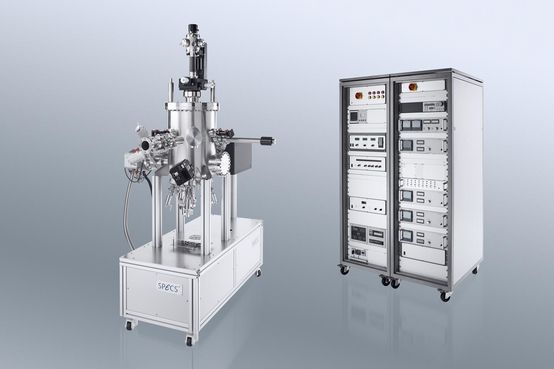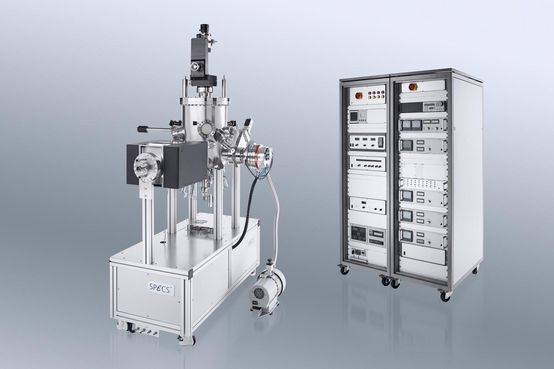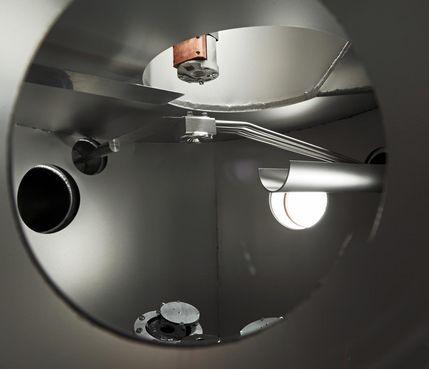 Detail
DetailMBE System
SPECS MBE System for Sample Prepration on SPECS SH2/12 (½ Inch) Samples.
The SPECS MBE system module a fully equipped UHV analysis system for advanced sample preparation. All systems are designed and manufactured at the SPECS headquarter in Berlin. A special engineering group personally accompanies the system process from the order placing until the final acceptance. Our engineers are dedicated to highest quality and usability of the system during design, testing and setup on site. Once the system is in full operation, a professional service team in our HQ and our worldwide branch offices takes care of a smooth and stable operation.
This sample preparation module is equipped with a 4 axes manipulator for half inch samples. The samples can be heated up to 800 °C. The system module has ports for a RHEED optic, flanges for up to 8 evaporators and an ion source, thickness monitor and sample transfer. Additionally the system contains more reserve flanges for adding other techniques like quadrupole mass spectrometer, or even ellipsometry, and viewports for better process control. The sample preparation can be computer software controlled if required. The SPECS EBE evaporator series allows sophisticated multi material evaporation. This feature in combination with other evaporation sources and techniques ensures a high advanced sample preparation level.
The typical vacuum in SPECS systems is better than 2 x 10-10 mbar achieved during assembly at SPECS. A final end pressure in the 10-11 mbar range is achievable. With an internal cryogenic plate for liquid nitrogen high quality growing can be ensured. The standard pumping configuration consists of and ion getter pump (IGP), a titan sublimation pump (TSP) and a turbo molecular pump (TMP) with connecting to a roughing vacuum. Different pumping configurations are available on request including cryopumps, larger pumping schemes and also NEG pumps.
All systems are equipped with a rigid frame and included bake-out tents with automated heating systems. An electronics cabinet hosts all relevant electronics, a main power supply and a TCP/IP based communication platform for the control units.
KEY FEATURES
- For advanced sample preparation
- MBE System for SPECS SH2/12 Samples
- with cryogenic plate for liquid nitrogen to ensure high quality growing
- 4 Axes Manipulator with heating up to 800°C
- Up to 8 evaporation sources
- Customized configuration
- Base pressure better than 2 x 10-10 mbar
- Option for RHEED
- Option for Software controlled deposition process
- Adaptable to transfer system and/or cluster


